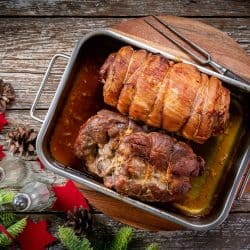Ramekins are excellent for preparing traditional French cuisine, pre-portioned meals, and snacks. These aesthetically pleasing tiny bowls serve many productive purposes beyond Creme Brulee and holding ingredients. Home cooks and professional chefs can attest to the many ways ramekins are an excellent product for baking, broiling, and steaming.
Yes, ramekins are successfully used for steaming in an array of recipes. The two options for steaming most widely used are on the stovetop and inside the oven. Each method is easily accomplished at home and does not require professional equipment. The stovetop method saves more energy, and the oven method tends to cook a bit quicker, depending on the recipe.
Are you interested in learning more about the art of steaming? Culinary advice for using your ramekins for steaming and how to do so safely. We've thoroughly researched these exciting topics. Please continue reading to learn more about the wonderful world of ramekins!

How to steam ramekins
There are two options that most home cooks and professional chefs use for great results with little equipment and minimal setup. Choosing the appropriate option for your recipe will depend on what you are cooking and the type of cookware you own.
For the stovetop method, start the setup by filling a large pan with enough water to reach 1/2 of the height of the ramekins. Set a cloth or paper towel in the bottom of the pan to protect the ramekins from bumping into each other. Then, turn the stove on low and allow the pan to gently simmer before filling the ramekins and placing them in hot water.
The oven steaming method starts by setting the ramekins into a large roasting pan and filling the pan with hot water up to the quarter-point on the ramekins. Gently set the ramekins in a roasting pan, cover them with aluminum foil, and place them into the preheated oven. Bake time will vary depending on the number of ramekins and the recipe.
Suggestions for steaming ramekins
The steaming process for working with ramekins takes practice, similar to developing like any other culinary skill. Always wear protect mitts when handling the hot ramekins. Silicone mitts are a good option because most can withstand temperatures of 500 degrees.
Using aluminum foil for ramekin coverings helps avoid spillage and shorten the cooking time; this technique is most useful for the stovetop method. Also, make sure the exterior of the ramekins is completely clean. This will allow the aluminum foil to stay in place and keep the ramekins from sticking to the pans.
If you have a combination oven with a steam setting, use this setting to steam your ramekins. Also, read the owner's manual to ensure that you are using the steam setting correctly. Depending on the model, the bake and steam settings are used interchangeably.
Can you overcook by steaming?
Overcooking is possible with any cooking method---steam is not an exception. Also, when steam cooking results in over-cooking, the food will become mushy and tasteless. The appearance of the food may look perfect; however, the inside will be flavorless mush.
How to avoid overcooking with steaming
Over-steaming usually results from underestimating how long a particular food takes to cook. Check your recipe for suggested cook time or check an online resource for clarification. Set the timer and always remain in the kitchen while steaming.
Overfilling the steaming basket is a common culprit for overcooked food. Be mindful of the amount, and do not overfill the basket. If too much food is placed in the basket, it will result in various under and over-cooked foods.
After the food has been steaming for approximately half of the cooking time, check the basket. Use a fork to evaluate the consistency and tenderness. These steps will help you avoid over or undercooking dinner!
Recipes that are great for steaming with ramekins
These recipes are testaments to the steaming process with tasty final results! Steamed golden syrup puddings are easy to mix up and usually require less than 25 minutes to steam. Also, omelets and steamed eggs are a healthy breakfast option that requires minutes to steam completely. Seafood is prepared in ramekins; crab meat is a well-loved steamed entree that pairs well with a decadent after-dinner souffle.
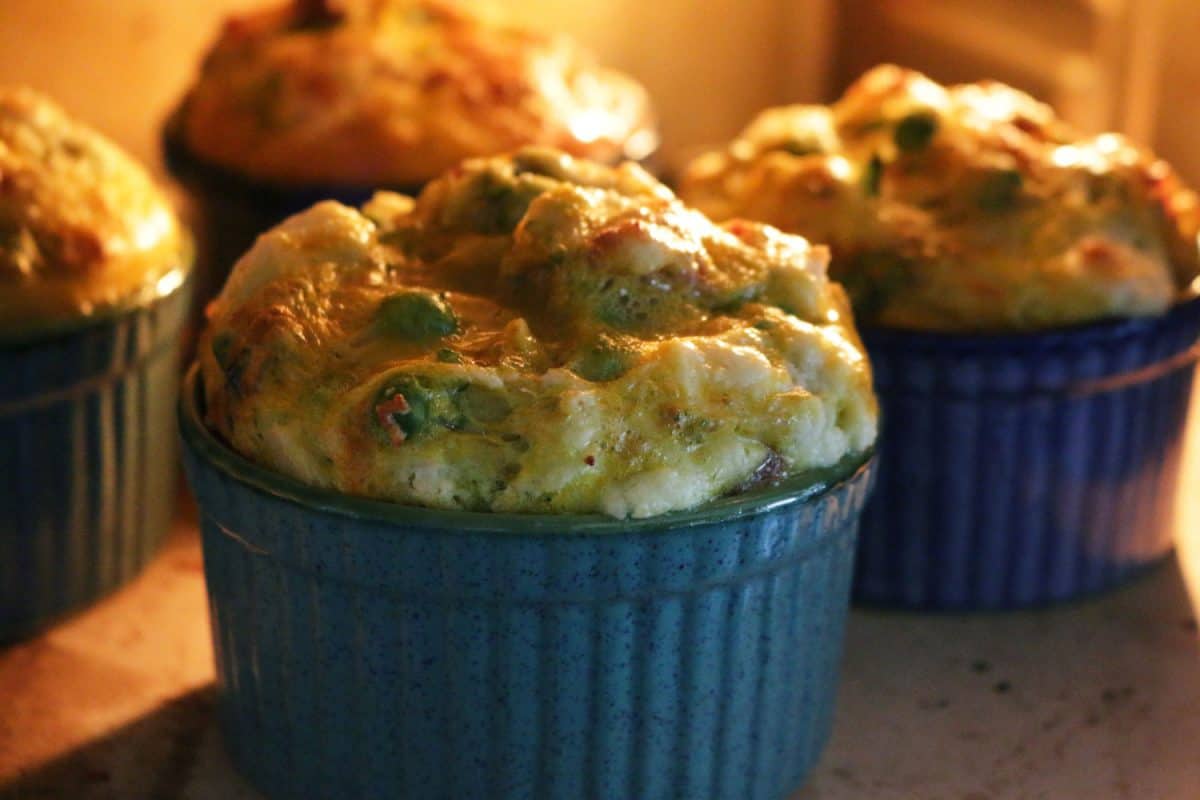
Is steaming faster than boiling?
Steaming saves valuable time and your energy bill. Waiting for a pot of water that must be brought to boil requires much more energy and water compared to the small amount necessary for steaming. Also, when boiling food, a great deal of the nutrients and vitamins are released into the water and poured down the drain.
Steam differs from boiling because the food sits in a metal steamer basket above the boiling water. After steaming for a few minutes with the lid on, most minerals and vitamins remain within the food. Steaming provides a much healthier meal, coupled with energy and water savings. In efforts to reduce stress on the planet, consider steaming when possible.
Is steaming the same as a water bath?
Steaming and water baths are similar because both use water for cooking delicate foods gently. Egg-based recipes, custards, and reheating would curdle from cooking on a stovetop or oven from high heat temperatures. Although, water baths are similar to steaming and loosely based on gentle, slow cooking principles with water.
A water bath, at times, is referred to as bain-marie and comprises any heat-proof dish that sits on top of a slightly larger and shallower container of simmering water. The water bath method is used on the stovetop and inside the oven for home cooks and restaurants.
How to create a water bath
Water baths inside the oven follow a similar protocol to oven steaming, with a few slight differences. Firstly, set the ramekins into the roasting pan and add water to the 1/2 or 3/4 height of the ramekins. Consider lining the inside of the roasting pan with a cloth towel to protect the ramekins.
Secondly, fill the roasting pan with simmering water and place it inside the preheated oven. Add simmering water as needed. To avoid pouring cold water into the ramekins. Pour the simmering water from a tea kettle or a pyrex measuring cup. Also, one could cover the ramekins individually with foil to help avoid a skin forming on the top layer.
Water baths on the stovetop are a great way to reheat sauces, soups or to keep dishes warm for several course meals. Start with lining the inside of the pan with a cloth towel. Next, fill a large pan with simmering water up to the 1/2 or 3/4 height of ramekins. You may want to cover the tops of the ramekins with their lids or foil to prevent the food from drying out. Add simmering water as needed.
Are ramekins microwave safe?
Most ramekins are microwave safe if they are made from ceramic or porcelain. The best way to find out is to check the bottom of the ramekin and look for where the manufacture signed the piece. That will indicate if the ramekin is microwave safe.
Also, the product description online or in the packaging will state if it is permissible for microwaving. For added safety, if the bottom doesn't state if it could go in the microwave, please contact the manufacturer to find out about any restrictions. Never use any dish in the microwave without double-checking first.
In closing

Steaming is an effective and quick way to prepare nutritious meals for yourself and your loved ones. Utilizing ramekins in the steaming process will add another skill to your ever-growing culinary skill-set. Please visit kitchenseer.com for more quality culinary information soon!

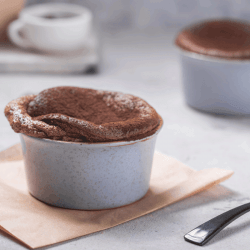
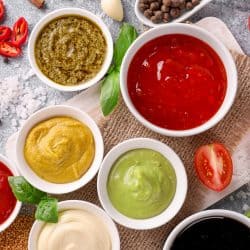
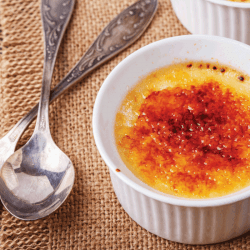
![Two ramekin with chak chak on a white table, What Is A Ramekin? [Pictures, Shopping Guide & Alternatives]](https://kitchenseer.com/wp-content/uploads/2020/05/Two-ramekin-with-chak-chak-on-a-white-table-250x250.jpg)
